The article “The 2,000-year-old Wonder Women who inspired the comic” was written by Kimiya Shokoohi on January 11, 2021 for the BBC. The article addresses a key issue of attribution to the warrior ethos of Iranian women since the dawn of history. The version printed has been edited from its original version. Kindly note that all the pictures and captions posted below did not appear in the original BBC report.
Kimia Shokoohi’s article also challenges the Eurocentric narratives of ancient Iran, notably with respect to the women of ancient Iran. For readers further interested in the women of ancient Iran, kindly consult the following:
- Women of Ancient Persia
- The Amazons
- Zoroastrianism, Women and Education
- Farrokh, K., & Karamian, Gh. (2018). Weapons in the tombs of Parthian Era Women in Northern Iran: A Preliminary Report. Fezana Journal (Publication of the Federation of Zoroastrian Associations of North America), Vol. 32, No.3, Fall/September, pp. 18-21. – For more on the weapons found in the graves of Parthian women fighters in the graves at Vestmin consult pages 67-68 in: Karamian, Gh., Farrokh, K., Kiapi, M.F., Nemati, H. (2018). Graves, crypts and Parthian weapons excavated from the gravesites of Vestemin. HISTORIA I SWIAT, No.7, pp. 35-70.
====================================================================================
The contemporary superheroine, Wonder Woman, has a backstory inspired by Greek mythology, which in turn was inspired by real-life ancient warrior women of Iran and other ancient civilizations such as China and India. The concept of truth is central to Patty Jenkins’ film, Wonder Woman 1984, the second in her superheroine franchise. Truth-seeking compels us to ask complex questions about history and cultural memory – and relates to the inspiration for Wonder Woman’s own origin story. Wonder Woman (2017) takes place in Europe during World War One, exploring the traumatizing effects of warfare on humanity; its successor is situated in Washington DC, 70 years later. Both films contain brief early sequences, told in flashback, where we find a young Diana Prince on her birth island of Themyscira, competing alongside veteran woman warriors in tournaments of Olympic proportions.
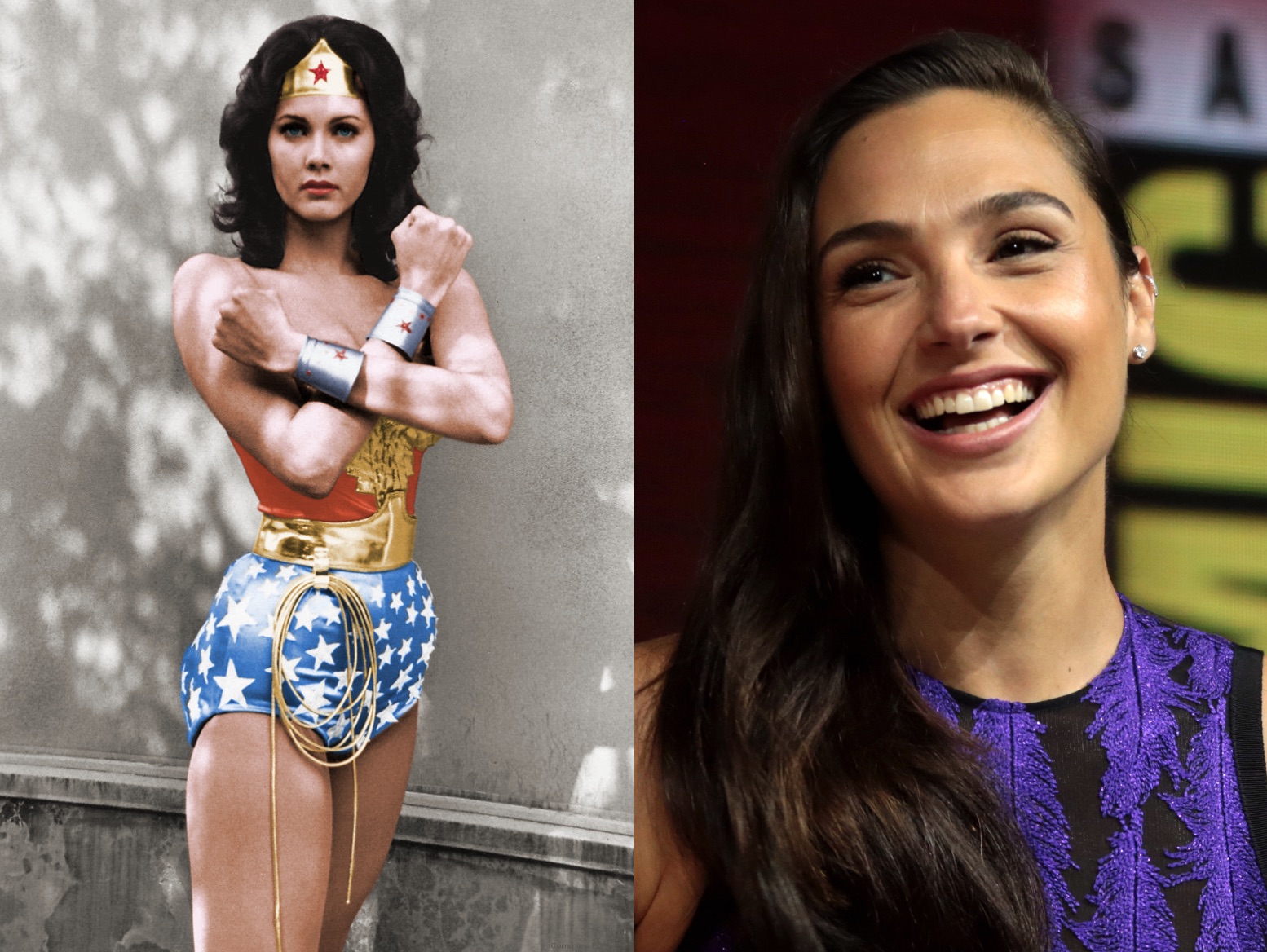 LEFT: American actress Lynda Carter poses for a Hollywood promotion photo on August 17, 1976 in support of the “Wonder Woman” TV series that ran from 1975-1979 (Source: Public Domain); RIGHT: Israeli actress Gal Gadot-Varsano, star of the “Wonder Woman” and “Wonder Woman 1984” movies (released in 2017 and 2020 respectively) speaking at the 2018 San Diego Convention Center in San Diego (Source: Gage Skidmore in Public Domain).
LEFT: American actress Lynda Carter poses for a Hollywood promotion photo on August 17, 1976 in support of the “Wonder Woman” TV series that ran from 1975-1979 (Source: Public Domain); RIGHT: Israeli actress Gal Gadot-Varsano, star of the “Wonder Woman” and “Wonder Woman 1984” movies (released in 2017 and 2020 respectively) speaking at the 2018 San Diego Convention Center in San Diego (Source: Gage Skidmore in Public Domain).
These are mere blink-and-you’ll-miss-it nods to Prince’s Amazonian backstory. Contemporary audiences may recognize the character of Wonder Woman – as played by Gal Gadot in Jenkins’ films, or perhaps US actress Lynda Carter, star of the 1970s ABC and CBS TV series, or as the original comic book character, which first appeared in the US in 1941 – more than the stories that inspired the character. The Amazons of Greek mythology and the real-life warrior women that led to this iconic modern-day Wonder Woman might, in fact, have their roots in ancient Persia – modern-day Iran.
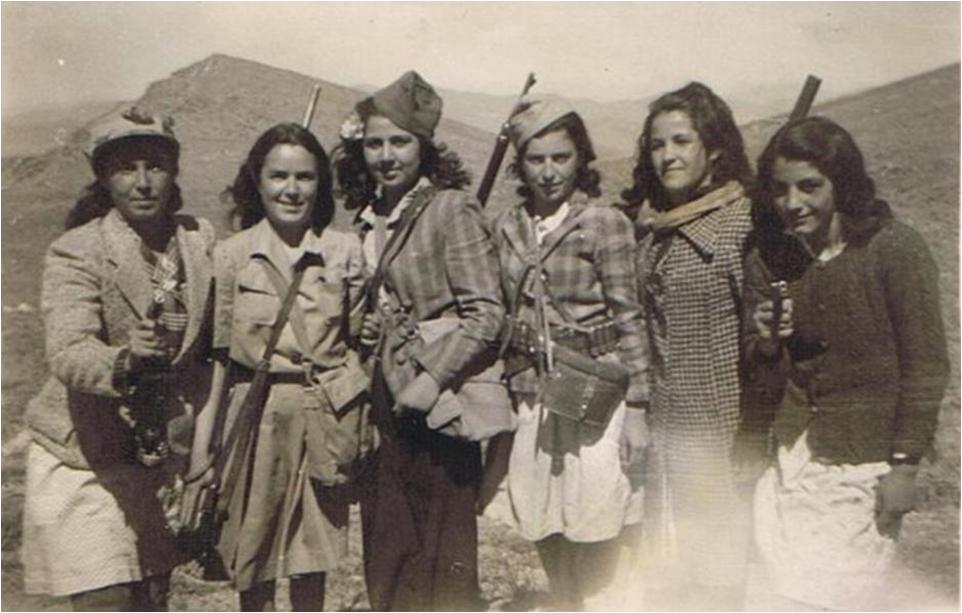
Iranian women from Malayer (near Hamedan in the northwest) engaged in target practice in the Malayer city limits in the late 1950s. The association between weapons and women is nothing new in Iran; Roman references for example note of Iranian women armed as regular troops in the armies of the Sassanians (224-651 CE).
As noted by Adrienne Mayor, (scholar at Stanford University and author of The Amazons: Lives and Legends of Warrior Women Across the Ancient World):
“There have always been stories of Amazons and Amazon-like women; sometimes they have circulated hidden under the surface and other times, like today, they break through into popular culture…it is no longer possible to deny the reality behind the myths of Amazons.“
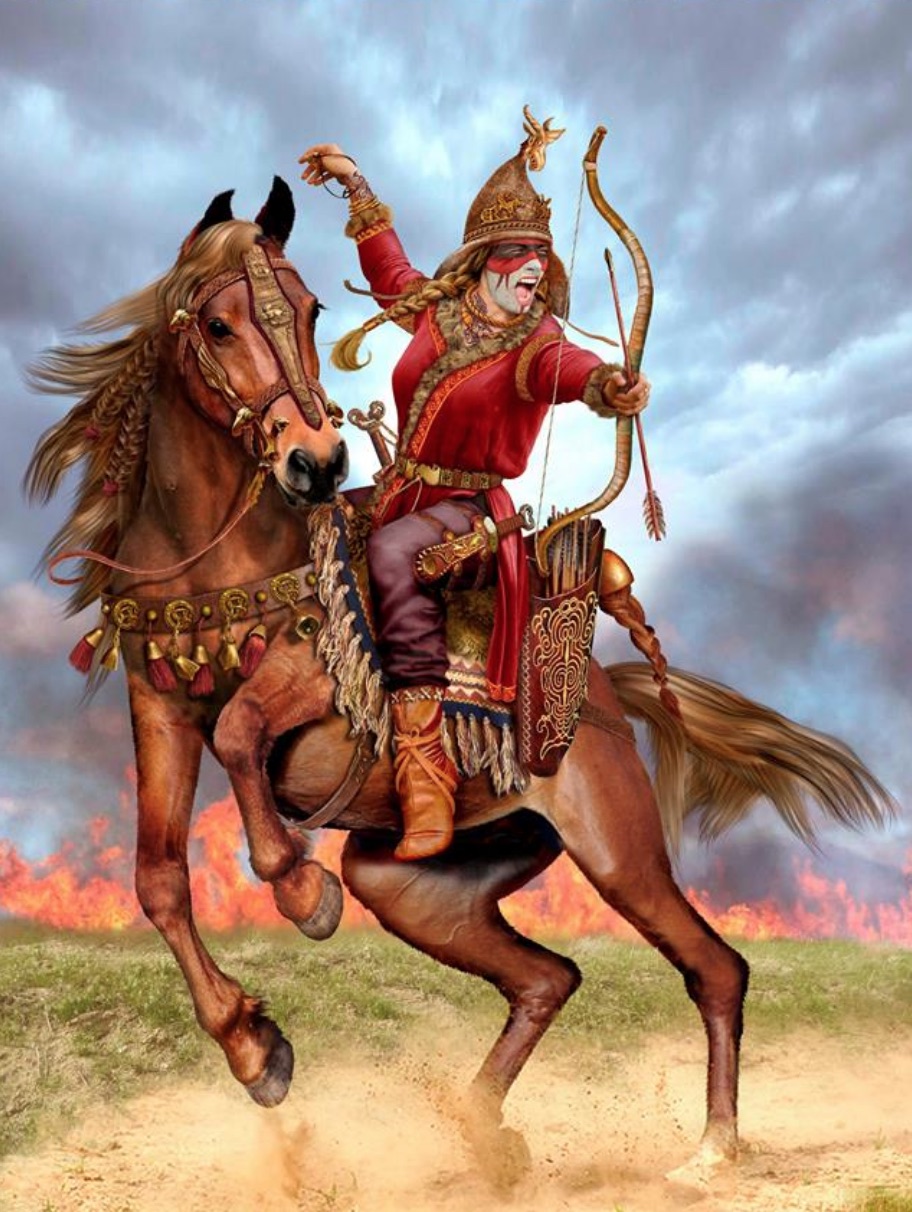
Female Scythian horse archer (Source: Osinform). The Sarmatians who succeeded the Scythians on the steppes and the Ukraine region were similar to their cousins in Persia where Romans made references to female fighters in the Sassanian army for example. Weapons have also found to be buried in the graves of Parthian females in northern Iran – for more see:
- Farrokh, K., & Karamian, Gh. (2018). Weapons in the tombs of Parthian Era Women in Northern Iran: A Preliminary Report. Fezana Journal (Publication of the Federation of Zoroastrian Associations of North America), Vol. 32, No.3, Fall/September, pp. 18-21. – For more on the weapons found in the graves of Parthian women fighters in the graves at Vestmin consult pages 67-68 in: Karamian, Gh., Farrokh, K., Kiapi, M.F., Nemati, H. (2018). Graves, crypts and Parthian weapons excavated from the gravesites of Vestemin. HISTORIA I SWIAT, No.7, pp. 35-70.
While the story of a race of warrior women first appeared in Greek mythology, excavations across the north and east of the Black Sea region have revealed that warrior women like the Amazons existed in real life. In December 2019, the graves of four female warriors from the 4th Century BC Sarmatian region were found in the village of Devitsa, in what is now Western Russia. The Sarmatians were a people of Iranian heritage, with men and women skilled in horsemanship and battle.
Excavations within the modern borders of Iran have revealed the existence of female warriors. In the northwestern Iranian city of Tabriz, 109 warrior graves were unearthed. Archaeologist Alireza Hejebri-Nobari confirmed in a 2004 interview that the DNA found in one belonged to a woman. DNA testing was due to take place on other warrior graves, 38 of which are still intact, but according to Mayor’s contacts in Iran, that DNA research was halted in August 2020 due to a lack of resources.
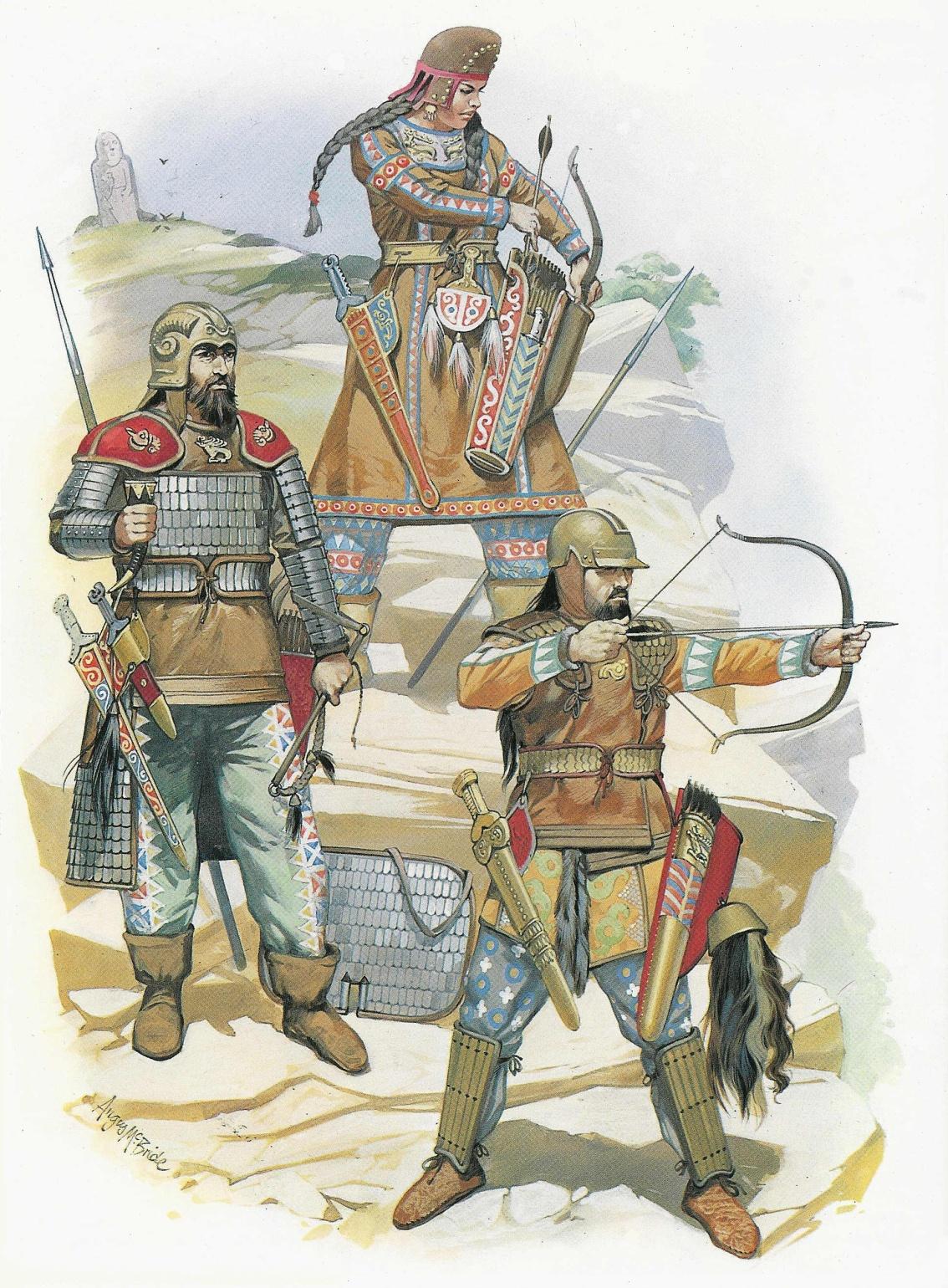
The real (but unrecognized) Iranian Wonder Women of history: A reconstruction by Cernenko and Gorelik of the north-Iranian Saka or Scythians in battle (Cernenko & Gorelik, 1989, Plate F). The ancient Iranians (those in ancient Persia and the ones in ancient Eastern Europe) often had women warriors and chieftains, a practice not unlike those of the contemporary ancient Celts in ancient Central and Western Europe. What is also notable is the costume of the Iranian female warrior – this type of dress continues to appear in parts of Luristan in Western Iran.
The great rivalries of the ancient Greeks and Persians are well documented in Greek art, history and mythology, so much so that historians of Ancient Persia rely on the Greek interpretation of the region to unlock its history. Experts have identified depictions of the women in battle with Greek men on vases and other ceramics as dressed in Persian-style clothing: the Kandys cloak, the Anaxyrides trousers, the Persikay shoes. By the 470s, the Greeks began to refer to portrayals of the Persians as the Amazons, turning their real-life adversaries into mythological folklore. Even the word “Amazon”, meaning “warrior”, is likely rooted in the Iranian language.
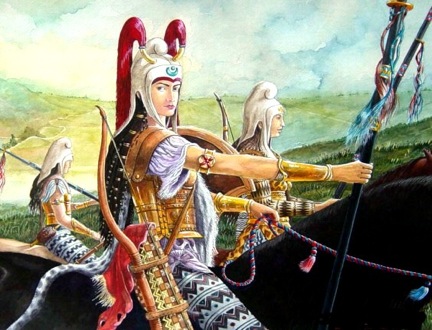
A reconstruction of a female Achaemenid cavalry unit by Shapur Suren-Pahlav.
Real-life warrior women existed far beyond the Scythians and Sarmatians, however. As noted by Mayor:
“Many ancient cultures besides Greece told exhilarating stories of warrior women – such tales are found in Persia, Egypt, Rome, Caucasus, Central Asia, Mongolia, India, and China …”
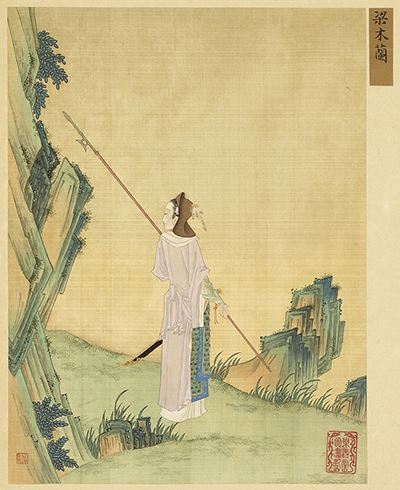
The painting “Gathering Gems of Beauty (畫麗珠萃秀)” which provides a depiction of Hua Muhlan, a female cavalry commander from the northern Wei dynasty (4th-6th centuries CE) of ancient China (Source: Public Domain).
And history reveals countless examples of real-life female warriors, like Cynane, half-sister to Alexander the Great, who came from a tradition of warrior women and was taught the same military skills as the young Alexander. Pantea Arteshbod, a female Persian commander during the reign of Cyrus the Great, was integral to maintaining law and order after Cyrus’s Neo-Babylonian conquest. The Arab queen Zenobia, of the Palmyrene Empire in Syria, rebelled against Rome to conquer the eastern third of the Roman Empire. And Joan of Arc, the most famous warrior woman in European history, in turn inspired others across Europe: Spain’s Isabella of Castile, granddaughter of Mary Tudor of England and a warrior in her own right, is said to have kept a chronicle of Joan’s life on her bookshelf.
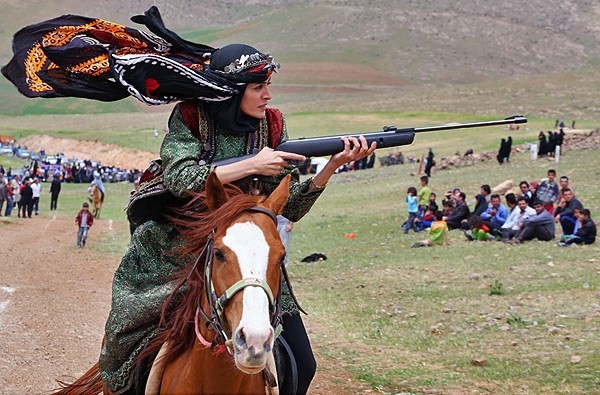
Lur woman in a local competition in Luristan province in Western Iran, partaking in a shooting contest on horseback (Source: Wisgoon.com). Images such as these are rarely (if ever) displayed in mainstream Western media and news outlets, even those purporting to be liberal and supportive of human rights. Eurocentricism with regards to ancient Iran continues to have a dominating influence on academia, news, cultural and entertainment outlets.
Wonder Woman may have become an all-American feminist icon of popular culture, but it is important to recognize her ancient roots – and the warrior women who came before her. Modern women in Iran, for example, who are unlikely to find films like Wonder Woman playing in theaters, have found their stories and identities missing in mainstream Western film and television – but nevertheless could they find inspiration in the Iranian roots of this warrior woman story? As the fictional 21st Century Wonder Woman uses her most important weapon – the truth – in the fight to bend the arc of the moral universe towards justice, by extension that should include the many generations of warrior women around the world who came before her.



